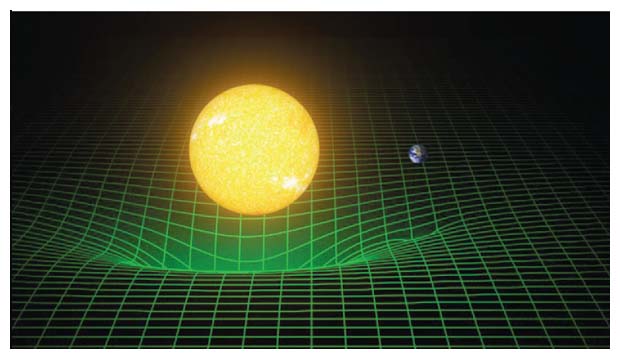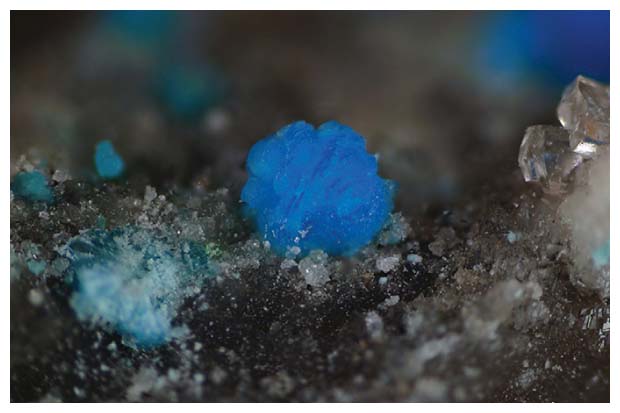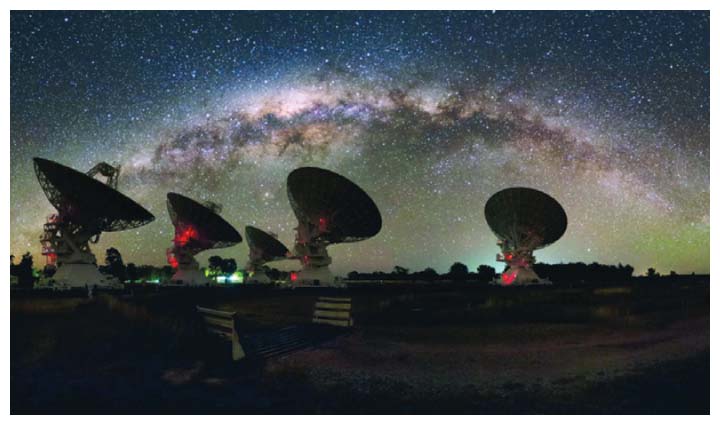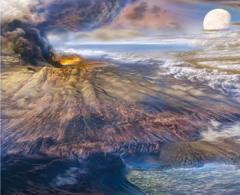
This Article From Issue
May-June 2016
Volume 104, Number 3
Page 145
DOI: 10.1511/2016.120.145
In this roundup, digital features editor Katie L. Burke summarizes notable recent developments in scientific research, selected from reports compiled in the free electronic newsletter Sigma Xi SmartBrief. Online: https://www.smartbrief.com/sigmaxi/index.jsp
Gravitational Waves Detected
Predicted by Albert Einstein 100 years ago, ripples in space-time called gravitational waves have been directly observed for the first time at the Laser Interferometer Gravitational-Wave Observatory (LIGO). This discovery confirms Einstein’s general theory of relativity, and hence the existence of black holes; it also opens new territory for studying collapsed stellar remnants and extreme gravitational phenomena. According to the theory, two black holes orbiting one another gradually spiral inward until they collide. During that event, they merge, converting a sizable portion of their mass to energy emitted as a surge of gravitational waves. LIGO physicists detected such a surge from a pair of black holes, 29 and 36 times as big as the Sun, 1.3 billion light years away. The resulting gravitational ripples distorted LIGO’s twin detectors by only 1/1,000th the diameter of a proton—but that was enough for a definitive detection. Physicists are now working to improve existing gravitational wave detectors and to add new ones.

Abbott, B. P., et al. Observation of gravitational waves from a binary black hole merger. Physical Review Letters 116:061102 (February 11)
Oldest Fossil Nervous System
A 520-million-year-old fossil of an early ancestor of arthropods contains remarkably preserved nerves. Found in southern China, the animal, named Chengjiangocaris kunmingensis, dates to the Cambrian explosion, during which many modern animal lineages emerged. It belongs to a group of animals called fuxianhuiids that share ancestry with insects, spiders, and crustaceans. Partially fossilized nervous systems have been found in other species from the same period, but they mostly have preserved only the profile of the brain. This fossil shows a nerve cord running down the length of its body, with beadlike ganglia controlling each of its many pairs of legs. The ganglia have tiny spindly fibers, individual nerves that fossilized as carbon films. Its nervous system is similar to that of modern-day velvet worms, but modern arthropods have evolved a simpler nervous system. The fossil's nerve cord also has a unique structure unknown in extant organisms.
Yang, J., et al. Fuxianhuiid ventral nerve cord and early nervous system evolution in Panarthropoda. Proceedings of the National Academy of Sciences of the U.S.A. 113:2988–2993 (March 15)
Earth’s Rarest Minerals

A study reviews Earth’s rarest minerals—those found at five or fewer locations on the planet. Researchers divided the 2,500 rare minerals that they identified into four categories that relate to the conditions under which they form, how rare their ingredients are, how stable they are, and whether they come from poorly studied locations. The resulting catalog will assist in determining where and how large certain rare minerals’ reserves may be; it also will help geophysicists study the fundamental construction of Earth.
Hazen, R. M., and J. H. Ausubel. On the nature and significance of rarity in mineralogy. American Mineralogist doi: 10.2138/am-2016-5601CCBY (in press)
Fast Radio Bursts Controversy
A paper claiming to trace fast radio bursts, mysterious fleeting radio waves from outer space, to their source has sparked a hot controversy among astronomers. These bursts last milliseconds but may contain as much energy as the Sun would emit in a year. The first fast radio burst ever detected hit a dish in 2001 but was not reported until 2007, so a big hurdle to finding their source has been closing this lag time; the bursts are also rare, with just 17 observed. Researchers led by Evan Keane set up an alert system triggered when live data suggest a fast radio burst is happening. After an alert, his team said they observed the burst's afterglow and zoomed in on the source. They pinpointed the burst to an elliptical galaxy 6 billion light years away. However, Harvard astronomers Peter Williams and Edo Berger say that the radio signal attributed to the afterglow is actually from an unrelated supermassive black hole. The source of fast radio bursts continues to be debated. Some bursts seem to repeat—which would not happen in the case of a one-time event like colliding stars.

Keane, E. F., et al. The host galaxy of a fast radio burst.
Nature
530:453–456 (February 25)
Williams, P. K. G., and E. Berger. No precise location for FRB 150418: Claimed radio transient is AGN variability.
http://arxiv.org/abs/1602.08434v3
(March 25)
Microcephaly Risk with Zika
An epidemic of the mosquito-borne Zika virus has been spreading in the Americas, coinciding with an increase in babies born with abnormally small heads, or microcephaly, and associated neurological birth defects. Drawing on records from a 2013–2014 epidemic in French Polynesia, researchers confirmed the link between Zika and microcephaly and calculated the risk for infected pregnant women. Their model shows that risk of a fetus with microcephaly increases from the norm of 0.02 percent to 1 percent for mothers infected with Zika during the first trimester of pregnancy. Although this level of risk is much lower than the risk of complications during pregnancy caused by other viral infections, such as rubella, it is still cause for concern because in affected areas the proportion of a population infected with Zika can exceed 50 percent. Researchers are attempting to isolate the mechanism that causes the birth defects.
Cauchemez, S., et al. Association between Zika virus and microcephaly in French Polynesia, 2013–15: a retrospective study. Lancet doi:10.1016/S0140-6736(16)00651-6 (March 15)

American Scientist Comments and Discussion
To discuss our articles or comment on them, please share them and tag American Scientist on social media platforms. Here are links to our profiles on Twitter, Facebook, and LinkedIn.
If we re-share your post, we will moderate comments/discussion following our comments policy.